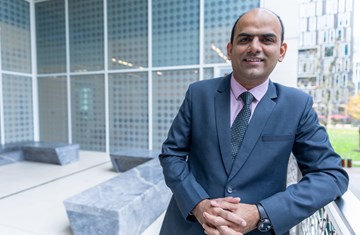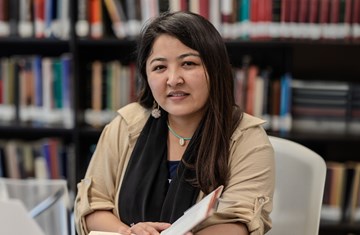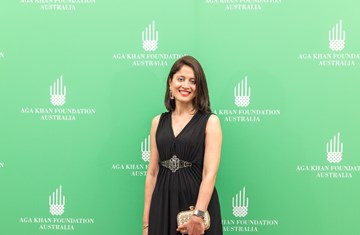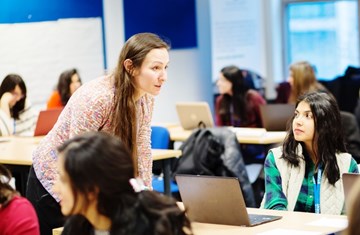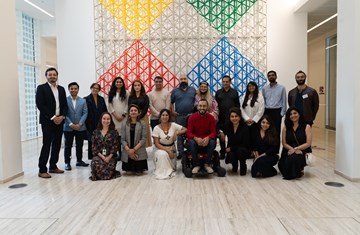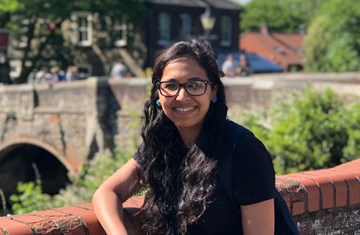European Chapter Group Convene Annual Meeting in Tunisia
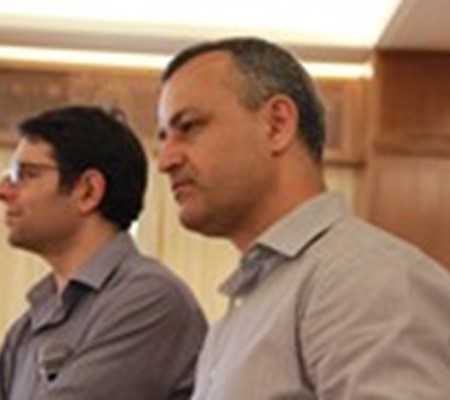
The Annual Meeting of the European Chapter Group (ECG) of the IIS Alumni Association took place against the backdrop of Mahdia (al-Mahdiyya), Tunisia, on 4-7 May 2014. Mahdia’s eminence as the first purpose-built capital of the Fatimid state in Ifriqiya provided the key focus of the meeting: Culture, Art and Architecture of the Fatimids and its reflection in Modern Mahdia.
The meeting commenced with a welcome address from the ECG President Dr Dagikhudo Dagiev (GPISH 2003), who described the historical significance of Mahdia, acknowledging what a privilege it was to discuss Fatimid Art and Architecture at the place of its origin. Following on, Professor Moncef Ben Abdeljelil of the University of Sousse gave a presentation on the evolution of the Tunisian Constitution, highlighting Tunisian society’s engagement in guiding the country’s future and the consequent amendments in the constitution. Professor Faouzi Mahfoudh, Manouba University, then presented on Scenes of Court, Scenes of Leisure: Fatimid Iconography of Mahdia and Cairo.
The Fatimids were renowned for numismatic excellence. To this end, former Head Librarian and Keeper of Special Collections at the IIS, Mr Alnoor Merchant, gave a presentation entitled, Through a Numismatic Lens: Exploring Aspects of Fatimid History in North Africa. Exploring the role and use of coins, Mr Merchant discussed various aspects of numismatic studies by explaining how different inscriptions on coins as well as their gold content can reflect the economic and political nuances of an empire.
With her presentation, Mahdia: A Fatimid Metropolis and a Mediterranean Gateway, Dr Shainool Jiwa facilitated a deeper understanding of the significance of Mahdia in Fatimid history and within the Fatimid Empire - in the context of the political milieu of the Mediterranean. Dr Jiwa drew upon various historical sources that highlighted the significance of al-Mahdiyya as a Fatimid capital.
The meeting included other talks on various aspects of Fatimid history. Dr Otared Haidar (GPISH 1998), gave a presentation on The Syrian Ismailis and Salamiyah: From the Fatimid Prototype to Modern Representations, emphasising elements of Fatimid history in the songs of Syrian Ismailis in Salamiyah. Dr Stephane Pradines, Lecturer at AKU-ISMC gave a presentation entitled, The Fortifications of al-Mahdiyya and the Beginnings of Fatimid Architecture, in which he discussed the role of these fortifications.
Excursions to Mahdia City, Mahdia Museum and Kairouan (Var. Qayrawan) whose rich architectural heritage includes the Great Mosque, with its marble and porphyry columns, took place during the course of the Annual Meeting. Other activities, affording the alumni a chance to socialise, included a team building activity organised by Zuleikha Haji, (GPISH 2012).
The meeting also included a session with Mr Shiraz Kabani, Head of Community Relations at the IIS, who discussed the latest developments at the Institute. He stated that the presentations given by three IIS Alumni, Dr Shainool Jiwa, Mr Alnoor Merchant and Dr Otared Haidar, were a testimony to the role of the Institute in the development of scholars in this field and the contributions that alumni are now making to the field of Ismaili studies, including at the Institute.
Commenting on the various presentations and excursions, Mr Rahman Rener (IOE 1982) said:
I particularly enjoyed Dr Shainool’s historical and geographical perspective which enabled me to better appreciate the position of Imam-caliph al-Mahdi within that context. I was also inspired by Mr Merchant’s ability to enable history to come alive via an exploration of numismatics. I felt moved to walk within the walls of al-Mahdiyya, the harbour and the palaces. This enabled the metamorphosis of my acquired knowledge into lived experience.
Ms Zaraangez Karimova (GPISH 2009) commented:
The interrelation of the theme of the meeting and the context of al-Mahdiyya was excellent. The meeting itself was synchronised by combining lectures with actual visits to the sites discussed.
Rizwan Lalani (STEP 2009) shared his views on the meeting as follows:
One of the best things about the ECG Alumni event in Tunisia was getting to know my fellow IIS Alumni. As much as I learned from the wonderful presenters, I learned equally as much from the interactions with my colleagues.

